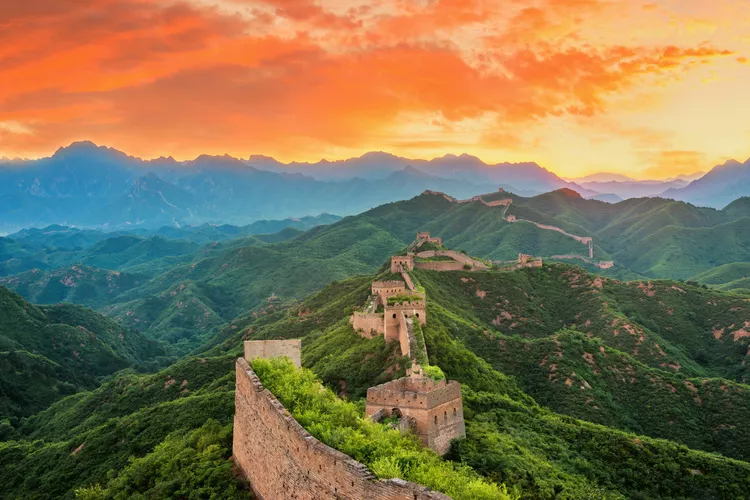Summary
The Great Wall of China is one of the country’s most enduring symbols; however, its history is more convoluted than most people realize.
How Long Did It Take to Build the Great Wall?
This is a question that sparks curiosity, often based on the common assumption that the Great Wall was built all at once. However, that is not the case. The structure might be better referred to as the Great Walls—what remains today is a series of walls constructed over several dynastic eras in ancient China. From its inception to its current form, the Wall underwent various forms of construction for more than two thousand years.
What Is the Great Wall?
It is frequently assumed that the Great Wall is a single long structure running from the East China Sea inland along the mountains north of Beijing. In reality, the Great Wall winds across China, covering over 5,500 miles (8,850km) and comprises numerous interconnecting walls built by different dynasties and warlords throughout the years. The most photographed section of the Wall belongs to the Ming Dynasty, constructed after 1368. Nonetheless, the term “Great Wall” refers to multiple sections that were constructed over 2,000 years.
Early Beginnings
In c656 B.C., the Chu State wall, known as “The Rectangle Wall,” was built to protect the Chus from powerful neighbors to the north. This section of the wall is located in what is now Henan Province. This early fortification served to connect small cities along the Chu State’s border.
Other states followed suit, building walls along their borders to guard against unwanted intrusions until roughly 221 B.C., when the Qin Dynasty began shaping the Great Wall as we know it.
Qin Dynasty: The “First” Great Wall
Qin Shi Huang unified China into a centralized feudal state. To safeguard his newly formed state, Qin decided that a substantial defense barricade was essential. He mobilized one million soldiers and laborers to work on the project, which lasted nine years. The newly constructed wall incorporated existing walls built during the Chu State. This Great Wall spanned northern China, commencing in present-day Inner Mongolia. Unfortunately, little of this wall remains, as it was located significantly further north than the current (Ming era) wall.
Han Dynasty: The Great Wall Is Extended
During the ensuing Han Dynasty (206 B.C. to A.D. 24), battles with the Huns led to the extension of the Wall, utilizing an existing network of older walls another 10,000 kilometers (6,213 miles) into western China, particularly in modern Gansu Province. This period marked the most intense construction phase and the longest stretch of the wall ever built.
Northern and Southern Dynasties: More Walls Added
Between A.D. 386-581, four dynasties contributed to the construction and expansion of the Great Wall. The Northern Wei Dynasty (386-534) added approximately 1,000 kilometers (621 miles) of wall in Shanxi Province. The Eastern Wei Dynasty (534-550) contributed an additional 75 kilometers (47 miles) while the Northern Qi Dynasty (550-577) saw the most significant expansion since the Qin and Han eras, extending the wall by about 1,500 kilometers (932 miles). Additionally, the Northern Zhou Dynasty (557-581) saw Emperor Jingdi renovate the Great Wall in 579.
Ming Dynasty: The Wall’s Importance Reaches a New Height
During the Ming Dynasty (1368-1644), the Great Wall regained its status as a crucial line of defense. Emperor Zhu Yuanzhang initiated renovations at the onset of his reign. He entrusted his son Zhu Di and one of his generals with the task of repairing the existing wall and constructing forts and watchtowers. The Ming Wall ultimately served to repel invading Mongols from the north and protected Beijing. Over the next 200 years, the wall was fortified, eventually extending to 7,300 kilometers (4,536 miles).
The Wall Today
The construction of the Ming Wall is what captivates most tourists today. It begins at Shanhai Pass in Hebei Province and extends westward to Jiayuguan Pass in Gansu Province, at the edge of the Gobi Desert. Although much of the last 500 kilometers (310 miles) contains only broken stones and rubble, the wall’s pre-Ming form can be traced as one travels through Gansu Province, from Jiayuguan to the entrance known as Yumenguan—historically significant as the “gateway” to China along the Silk Road during the Han Dynasty.





